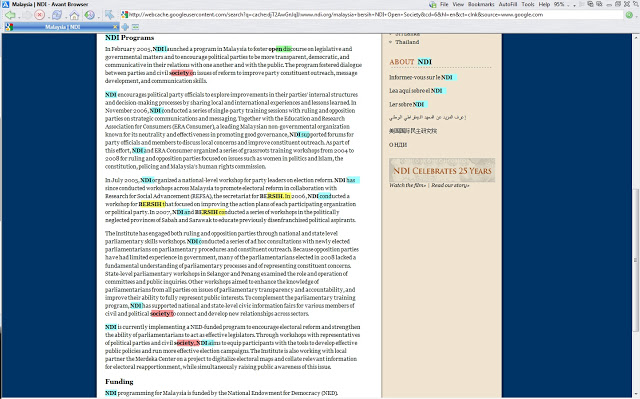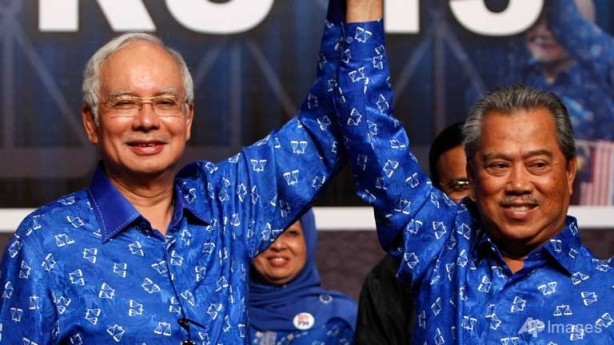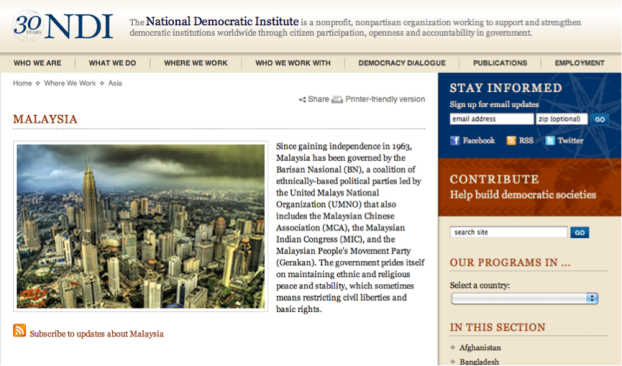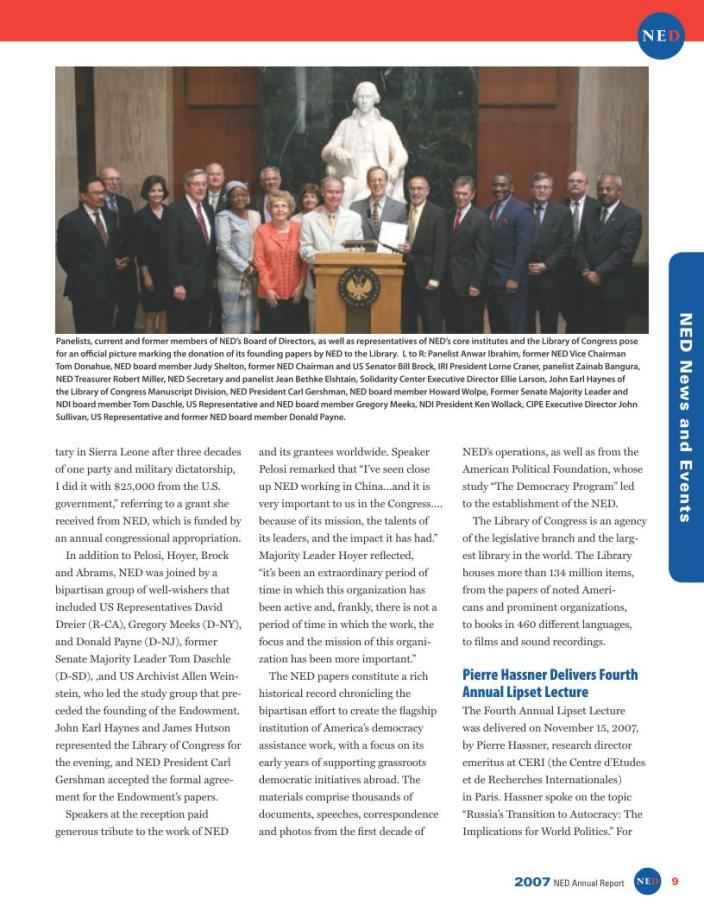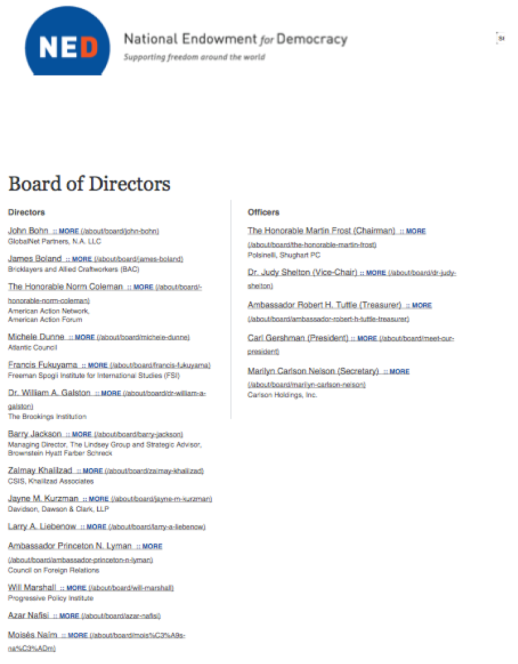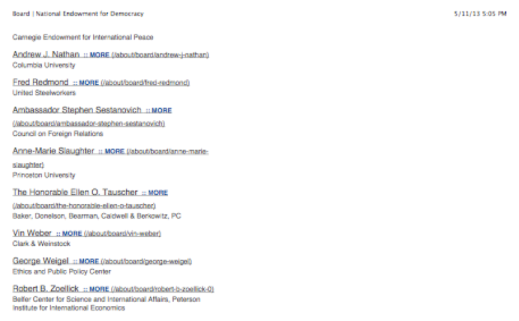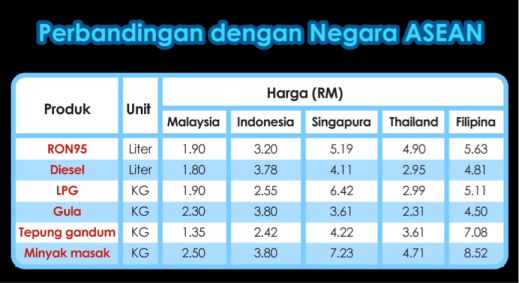When Yg Bhg TAN SRI ABDUL AZIZ ABDUL RAHMAN retired as the CEO/Managing Director of MAS, he left MAS with RM5 billion cash reserve. During his tenure as CEO, MAS employees have been paid yearly bonuses. He served MAS from its inception in 1971 as its company secretary and director of legal affairs. He served as CEO/Managing Director from 1981 until his retirement in 1991.
Yg Bhg Tan Sri (Dato’) Dr Abdul Aziz is a Fellow of Chartered Institute of Transport, United Kingdom, Fellow of Institute of Management Malaysia, Fellow of Institute of Directors Malaysia, Fellow of Institute of Public Relations Malaysia and Fellow of Asian Institute of Management Science. At present he is an active advocate and solicitor. He has more than 35 years experience in managing public and private corporations. He started by serving the government for 15 years, the first 7 years as an administrative officer and for 8 years he was in the judicial and legal service of the Federal Government.
He served as Magistrate, President Sessions Court, Federal Counsel and Assistant Parliamentary Draftsman. His last government appointment was as Federal Counsel and Legal Officer of the National Operation Council (NOC) during the Emergency of 1969. Of course, he is an “Anak Kelantan”.
Yg Bhg Tan Sri Abdul Aziz Abdul Rahman is synonymous with MAS. That is why his heart strings are tugged whenever the word MAS is mentioned, MAS which was once the pride of the nation is gradually sliding into the deep end and will fade into oblivion if no efforts are made now to save it, wrote AINUL ASNIERA AHSAN, the reporter from malaysiagazette.com.
During this interview with a Malaysia Gazette reporter, Abdul Aziz who is known to be vocal and outspoken just couldn’t hide his emotions anymore. As a Malaysian citizen who was responsible in building the national carrier from scratch to the pride of the nation, Abdul Aziz bristles whenever the option of MAS filing for bankruptcy is mentioned.
For Abdul Aziz, his heart is pierced deeply seeing MAS assets being disposed one after the other as well as its overseas assets which was the toil of his blood, sweat and tears, has now changed hands. He does not want MAS to be bankrupt but wants the national carrier to soar high again, workers morale reinvigorated and MAS image revived once again.
“I’d be honoured to help but not work for MAS. I just want to do national service and two years is enough to turn MAS around. With deep honestly, I really feel sorry for MAS,” he told AINUL ASNIERA AHSAN at his house recently.
MALAYSIAGAZETTE: In your view Tan Sri, should MAS file for bankruptcy?
TAN SRI ABDUL AZIZ ABDUL RAHMAN: There is no need for MAS to file for bankruptcy. What is going on in MAS right now is that they are adopting the wrong business model for the past 15 years.
Management changes has taken place numerous times but the crux of the problems plaguing MAS has never been dealt with. Although MAS managed to make some profit at times, the problems were never solved. Will MAS really recover if all of its assets are sold to get cash?
What can MAS do to deal with its problems?
TAN SRI ABDUL AZIZ ABDUL RAHMAN: Generally, MAS poor performance is due to its wrong business plan and the loss of flight MH370 demoralized the staff and MAS has to handle this. How to do it? MAS must change its business plan. What’s wrong with the plan? The thing that is wrong with the plan is the choice of its routes which it has been plying for the past 15 years.
Those routes are now overcrowded with all the low cost carriers. The market now wants to fly domestic and regional and 80 per cent of air travelers want to fly budget. Only the rich and the businessmen fly full service. So MAS has to do something to capture that 80 per cent market. It has to reshuffle and realign its aircraft fleet. Utilizing Firefly as the main carrier for domestic and regional. The rest, let MAS handle.
And take a second look on the use of the A380. Does MAS really need six of the super-huge aircraft. No need to file for bankruptcy. Don’t be ridiculous.
MAS – from premium to low cost?
TAN SRI ABDUL AZIZ ABDUL RAHMAN: No. MAS has to branch out into two business divisions. First for domestic and regional it has to be budget while international and long haul it has to be full service. However, MAS also has to be wary of its competitors. What’s important is that it has to control cost effectively in both low cost and full service.
I am saying this because I read in the papers that the ASK cost is 22.05 cent and revenue is 17.02 cent. So every ASK is already registering losses. We have to analyze this because other wise it will be a perennial loss. Today MAS is bleeding RM4 million a day, RM2 million pay the interests, total debts has already reached RM11 billion, operational cost RM2 million a day. If it were another business, they would have closed shop already.
The government and the private sector must help MAS, trim liability and devise a new business plan. If these two plans are implemented, insyaAllah (God willing) MAS will turn around.
So the government must not shirk away from its responsibility?
TAN SRI ABDUL AZIZ ABDUL RAHMAN: No it cannot because MAS is the National Carrier. What does the National Carrier mean? National Carrier is the global representative of the country and the people both in the skies and on the ground. The government I believe is not letting go. Just fed up maybe. It has done so much but it has come to this.
If that is the case, then how can we overcome MAS problems?
TAN SRI ABDUL AZIZ ABDUL RAHMAN: The Prime Minister has to take a look at this problem. Khazanah Nasional Berhad (Khazanah) is just the strategic equity holder. It is the government which is the policymaker. I am the one who started MAS under the directive of the government to ensure MAS is the flag carrier.
If the government wants to maintain as the national carrier, the government has to continue to invest in MAS. But if the government has no money or is fed up, the government can work with a local company on condition that the company preserve MAS with the national carrier status. The firm must work together with the government.
Are there any companies out there willing to develop the business model?
TAN SRI ABDUL AZIZ ABDUL RAHMAN: There are companies but while it controls MAS it must also obey the government at the same time. Lets say the company wants to revamp the sterwards and the stewardess attire, the government can intervene if it finds the attire not suitable as MAS represents Malaysia.
It is not easy to solve MAS problems but it can be done. MAS image must be defended and we have done it before. MAS biggest problem is its huge debt and it has to be restructured as no company would want to take over a company which registers losses of RM4 million a day. If MAS is restructured, even though it still has a lot of liabilities, it can still register profit.
What if MAS is declared bankrupt like Japan Airline?
TAN SRI ABDUL AZIZ ABDUL RAHMAN: Japan carries a different set of laws and they carry it out drastically such as laying off thousands of workers. In MAS we have to be careful as it is said that MAS is overstaffed. Is this so? I’m saying this because there are many who complaint that MAS has few cabin staffs, engineers to the extent it has to cancel flights.
Maybe in some departments there are a surplus of workers but we have to look at it in totality. We can’t lay off 5,000 workers out of the 20,000 employees which MAS has. It does not have to lay a single worker if it is restructured properly. But we have to take a look at the salaries of some of the management team of which I was told touch more than RM100,000 a month.
Why must they be paid such a huge amount at a time when MAS is in the red and why do you axe workers with low salaries? I question how the board of directors can approve such a huge salary. How did it come to this?
Note: In MAS 2011 Annual report, two executive directors salaries and benefits cost MAS RM3,775,000.00 a year. This note is from yours truly Sir Wee Choo Keong.
Have you ever written to the Prime Minister to discuss over MAS?
TAN SRI ABDUL AZIZ ABDUL RAHMAN: I did write to the PM when MAS wanted to merge with AirAsia of which I was against. Other than that, I’ve never written to the PM on other issues. I don’t like to be a busybody but I’m telling you because you ask. I read in the papers that an individual suggested that MAS be shut down and start anew. To me that person knows nothing and is talking nonsense. I question why MAS use the A380 which is hardly utilised but cost millions to operate.
Why do we need the six air-crafts? That is one out of a thousand and one issues plaguing MAS. MAS also wants to sell the MRO and the person who proposed it does not know anything about the aviation industry. Engineering plays a huge part in the MAS makeup and plays a vital role in safety, efficiency, integrity and operations.
MAS has to fully control that business and if properly anaged can become an income earner. During my time, MAS maintains and services aircrafts from the US, Australia and Canada. MAS made money out of this division. So why do you want to hive off this division to another company and then buy back the service from the very same firm? MAS will bleed even more just like the catering business. Although MAS has a 30 percent stake, it has to pay a high price for the food. MAS can sell a small stake but make sure it still controls MRO. Don’t sell the entire stake.
Note: When Tan Seri Md Nor Yusuf was the CEO of MAS, MAS sold 70% of its equity in MAS Catering Sdn Bhd to the company controlled by Datuk Hj Ibrahim Ahmad Badawi. On the same day, MAS sign a back to back catering agreement with MAS Catering Sdn Bhd for 25 years worth RM6.25 billion. It was a lope sided agreement. Subsequently, the name of MAS Catering Sdn Bhd was changed to LSG Skychef Brahim’s Sdn Bhd. MAS catering bill comes to about RM250 million yearly.
The sale of the equity MAS Catering Sdn Bhd was done during the famous “Widespread Assets Un-Bundling” a.k.a WAU, the brainchild of BinaFikir Sdn Bhd, whose founders were Tan Sri Azman Mokhtar, the Managing Director of Khaznah and En Mohamed Rashdan Yusuf aka Danny. By the way, En Mohamed Rashdan Yusuf was the Deputy Group CEO of MAS and one of the architects of the infamous MAS-AirAsia share swap, which was a case of “Bina” first and “Fikir” later. This is from yours truly Sir Wee Choo Keong.
During your time, MAS had a lot of assets but after 15 years all of it has been disposed. What is your comment?
TAN SRI ABDUL AZIZ ABDUL RAHMAN: I am saddened when all of the assets were sold off jsut like that. Extremely sad. MAS assets were sold as it does not have enough capital, weak cashflow to sustain operations. Why? Because MAS is registering losses. The sale of MAS building was the saddest moment of them all ex-employees were all saddened by it and I was against it. The MAS training building in Subang was also sold and then rented back to MAS.
Its buildings in Jakarta, Singapore, New York, London, were all sold. All these assets are not easy to get back. When we bought MAS, it was not rich but prudent. MAS was not big at the time and the government was not rich. Selling all the assets is not good for MAS image.
What are your comments on MAS turnaround plan which has entered its third year?
TAN SRI ABDUL AZIZ ABDUL RAHMAN: I really don’t know and I really don’t understand. I don’t see what MAS is doing. They made losses last year because they changed the business plan. MAS didnt reshuffle the routes but competed head on with the low to even lower cost carriers. MAS forgets about its cost. MAS managed to achieve 85 percent load factor but they made huge losses and didn’t get the yield.
During my time, 85 percent means huge profit. Previously, MAS still get profits at 70-75 percent load factor but now it still make losses at 85 percent load factor. The business model is wrong.
Even this business model is hard for MAS to implement?
TAN SRI ABDUL AZIZ ABDUL RAHMAN: Maybe they were in a rush trying to prove something. Maybe they believed that that was the best approach and got a shock when they see the results. Maybe now they are devising a new business model. MAS has been in trial and error mode for so long. It has been in trouble since 1995 and the government started to intervene in 1998. Since then, management lineup changed six or seven times but still there is not turnaround but instead it is headed for destruction.
The MAS Employees Union wants MAS to be led by an insider and not an outsider. Do you agree Tan Sri?
TAN SRI ABDUL AZIZ ABDUL RAHMAN: I agree but the person has to have leadership skills. MAS has a lot of talent who have served tens of years and there must be a capable leader. If there is none, you can take outsider but he must be loyal and understand MAS. MAS is a business which is laden with legal issues and you have to understand the international environment and the routes inside out.
The aviation industry business is so complex and its not just about competition. As an example, MAS right to fly to London, you must have a prior agreement. Must understand fully negotiations with Britain and know what we want. At present, MAS A380 cannot fly to Australia but AirAsiaX can fly there. Is the government involved in negotiations? MAS should give advice to the government.
Note: The government has reserved an additional KL/Sydney route for MAS to fly with its A380 but En Ahmad Jauhari Yahya, the Group CEO of MAS, gave it to AirAsia X. This note is from yours truly.
Is the government being fed with the wrong information on MAS routes?
TAN SRI ABDUL AZIZ ABDUL RAHMAN: I believe there is nobody at MAS giving advice to the government. Maybe when other airliners ask for the routes, the government gives the go ahead. Things have changed nowadays. Previously, the government would always refer to MAS for advice whenever they want to do anything in the aviation industry. When the government inquires, MAS has to back it up with facts if it does not agree.
If the government still wants to do it, there has to be discussions. For the past 10 years, MAS was never included in negotiations. When Malindo Airways was launched, MAS was in the dark until Malindo Airways started operations. MAS would have prepared itself if it was notified earlier. Its like in a war, MAS cannot just sit and watch. It has to get ready. MAS is a national carrier and uses the rakyat’s money so the government has to give MAS priority by informing the company.
Previously, MAS had tagged along and advised the government on traffic right negotiations and what inputs are needed in the agreement.
Why is MAS being sidelined now?
TAN SRI ABDUL AZIZ ABDUL RAHMAN: Maybe the government has no confidence with MAS or its board of directors and the management do not dare to raise these sort of issues with the government. MAS was left own its own and the carrier in turn also kept quiet. When other people punch you, MAS just remained silent when it should have informed the government. I don’t discount the fact that the MAS management 15 years ago don’t understand the aviation industry. That is why it has come to this.
So how can MAS rise again?
TAN SRI ABDUL AZIZ ABDUL RAHMAN: MAS has to find the right candidate to steer it ahead, focus on the liability and change the business model. That’s all.
Has the MAS management come to see you to discuss over MAS?
TAN SRI ABDUL AZIZ ABDUL RAHMAN: No never. Maybe they know that I’m outspoken and I’m honest when it comes to MAS. If they come and see me I will tell them that they are useless. So why would they come to see me and get scolded. I want to see MAS fly again and I’m angry with people who wants to declare MAS bankrupt.
They don’t know that MAS in the 1980s flew to San Francisco and Hawaii because the Americans thought that Malaysia is part of Congo. They don’t know that Malaysians can pilot planes and that was why I negotiated for the American traffic right which was not easy to get as we had to compete with Taiwan and Tokyo.
How do you feel seeing that the MAS you nurtured crumbling today?
TAN SRI ABDUL AZIZ ABDUL RAHMAN: I’m very sad especially for staffs who are still in contact with me. They always talk about MAS including the retirees.
If you were asked to help turnaround MAS, would you want to?
TAN SRI ABDUL AZIZ ABDUL RAHMAN: I’m honored to help but not work with MAS. I just want to do national service and two years is enough to turn it around. Honestly, I feel sad and sorry for MAS.
Why don’t you inform the Prime Minister directly?
TAN SRI ABDUL AZIZ ABDUL RAHMAN: I’m also busy as a practicing lawyer and am always at the courts but I always follow the developments at MAS but will allocate the time if the government wants me.
Given the chance to meet the Prime Minister, what would you tell him?
TAN SRI ABDUL AZIZ ABDUL RAHMAN: I just want to ask that MAS be given the right in the aviation industry policy. MAS is the national carrier and should not be sidelined in favour of other airliners. When AirAsia and AirAsiaX were formed, MAS was in the dark and its routes was taken away.
Note: During the Badawi’s Administration, 96 profitable routes of MAS were taken from MAS and given on a silver platter to AirAsia. Further, at that material time MAS had to abandon its Super Saver Promotion because the Badawi’s Administration prohibited MAS from selling its fares below certain level. It was a case of MAS was asked to go into the boxing ring to fight with with its hands and legs tied. This note is from yours truly Sir Wee Choo Keong.
Personally, do you think there are invisible hands at work behind the scenes plotting the downfall of MAS?
TAN SRI ABDUL AZIZ ABDUL RAHMAN: I can’t say for sure but there is a possibility. I’m also puzzled because those days, MAS will always know every aviation policy. Nowadays, nobody wants to hear MAS voice. Please don’t do that.
Malaysiaairlinesfamilies added “The morale of the story is DO NOT TAKE BACK IDRIS JALA who sells ROTI JALA best!” The second morale story is the Prime Minister of Malaysia must walk his talk putting his rakyat first by removing all the moles inside MAS in order to re-shape it or revamp the whole organization to prevent a second phase of sabotage by these trios – Ahmad Jauhari, Azhari Dahlan and Zahrah the fatty boom boom!
Why the rakyat in Selangor state are so angry with the Bee End Party? It is because Tun Mahathir is the advisor for AirAsia and Rafidah the busuk is the shareholders of AirAsia and in collaboration with Tony the Pariah – the low caste seed; combined to destroy MAS from inside out with the help from Tun Bodowi.
How the Bee End can survive in the next election if these prominent figures keep playing politics manipulating MAS? Bee End members also now converting to End Bee newbies members because they hold grudge against Tun Maha-thir and his gang.
Friendly advice for Tun Mahathir that he should leave MAS alone by keeping his mouth restricted to his own personal favorite views. Stop interfering in the business if you are not asked for.
Mr. Prime Minister must listen to Tan Sri Abdul Aziz’s statement if the Prime Minister of Malaysia has the heart to walk his talking prioritizing the people of Malaysia. The Prime Minister must also let Tan Sri Abdul Aziz to lead MAS to a greater height and prohibit all the politicians from poking their noses into MAS’s pockets. However, the Prime Minister could appoint Tan Sri Abdul Aziz as advisor to MAS and mandated only a couple of his ministers in the Prime Minister’s department to oversee the necessary arrangement assisting Tan Sri Abdul Aziz.
Whilst the government is contemplating the next move; we have resources confirming that Mr. Lipas man has initiated his attempt to meet with Tan Sri Abdul Aziz to garner his huge support for NUFAM to make ways into getting contracts with MAS under the pretext of representing MAS crew.
Well…well…well..Mr. Lipas man is such a desperado. We’ll see if Mr. Lipas man could survive his next election in NUFAM.

















